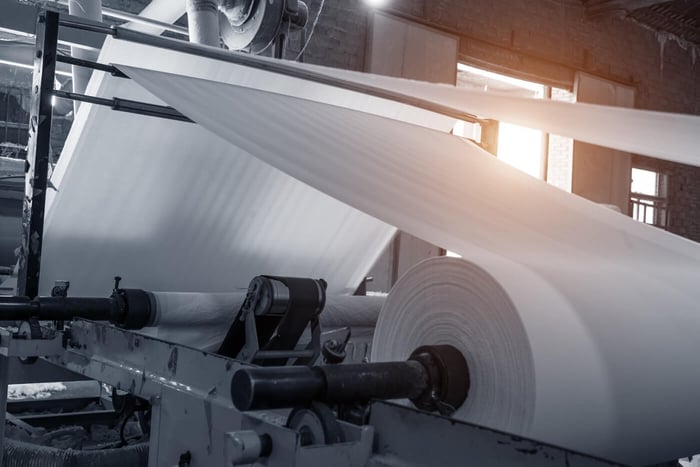The ownership of paper mills is changing a lot in Europe right now, which is likely to affect people who buy graphic paper. In the past few years, there have been a lot of mill closures and changes, which have taken about 6 million tonnes per year of commercial printing paper and newsprint off the market. During this phase of change, big deals are being made, like when Aurelius Group bought three of Sappi's graphic paper mills in Europe for more than €1 billion and when Agfa's Offset division was bought for €92 million.
Aurelius Group bought Sappi's European mills as part of its investments in many different businesses, from making shoes to yachts. Sappi is getting out of the graphic paper business by selling its mills. The business value of the purchase is €272 million, and the deal is expected to close in the first quarter of 2023. It will be interesting to see if Aurelius Group can do the same thing with this new purchase as it did with solid board maker Solidus Solutions, which it sold in 2019 for 16 times what it paid for it. This was Aurelius Group's biggest exit at the time.
Each Sappi site has its own power plant that makes electricity and steam. This makes them efficient with energy. Sappi still has six other European mills that make specialty papers and boards. The company says that in the future, it will focus on the stronger commercial print market when it comes to graphic paper.
On the other hand, Stora Enso is getting out of the graphic arts paper industry so it can focus on packaging materials. It put up for sale four of its remaining five paper mills earlier this year, and now two of them have new owners. The Swedish company Sylvamo is buying the Stora Enso mill in Nymolla, and the German company Schwarz Group is buying the Stora Enso mill in Maxau through its Schwarz Produktion division. Nymolla makes uncoated paper without wood or pulp, like the brand Multicopy. It gets 85% of the energy it needs from carbon-neutral, renewable biomass waste that has already been used. The Maxau mill in Germany will become part of the Schwarz Produktion operation, which makes food and drinks for stores. By buying Maxau Mill, Schwarz Group is securing its own supply chain. It uses a lot of the SC paper made at Maxau to make supermarket flyers, which are a key way to market its Lidl and Kaufland brands.
Unfortunately, there are expected to be more closures in the industry. At the time of writing, the future for Arjowiggins' historic Stoneywood and Chartham mills in the UK looked bleak. For some paper assets, willing buyers abound, as Sappi had multiple offers for its mills. However, one way or another, people who've been buying graphic grades from Stora and Sappi for years will be dealing with new names come 2023.
What will the impact be on the Printing Industry broadly?
The consolidation of the paper industry in Europe is likely to have a broader impact on the printing industry. As mills close or change ownership, the availability and pricing of graphic paper may be affected, which could impact businesses that rely on this type of paper for their products.
Graphic paper is used in many different applications, including magazines, catalogs, books, and advertising materials. Any disruption to the supply chain could have consequences for the printing industry, including delays, increased costs, and a shift towards alternative materials.
In addition to changes in the availability of graphic paper, the consolidation of mills may also impact the quality and consistency of the paper produced. Different mills have different processes and technologies, which can result in variations in the paper's characteristics, such as brightness, opacity, and weight.
Ultimately, the impact of the paper mill consolidation on the printing industry will depend on a range of factors, including the specific mills affected, the demand for graphic paper, and the ability of businesses to adapt to changes in the market. However, it is clear that any significant disruption to the supply of graphic paper could have far-reaching implications for the printing industry as a whole.






